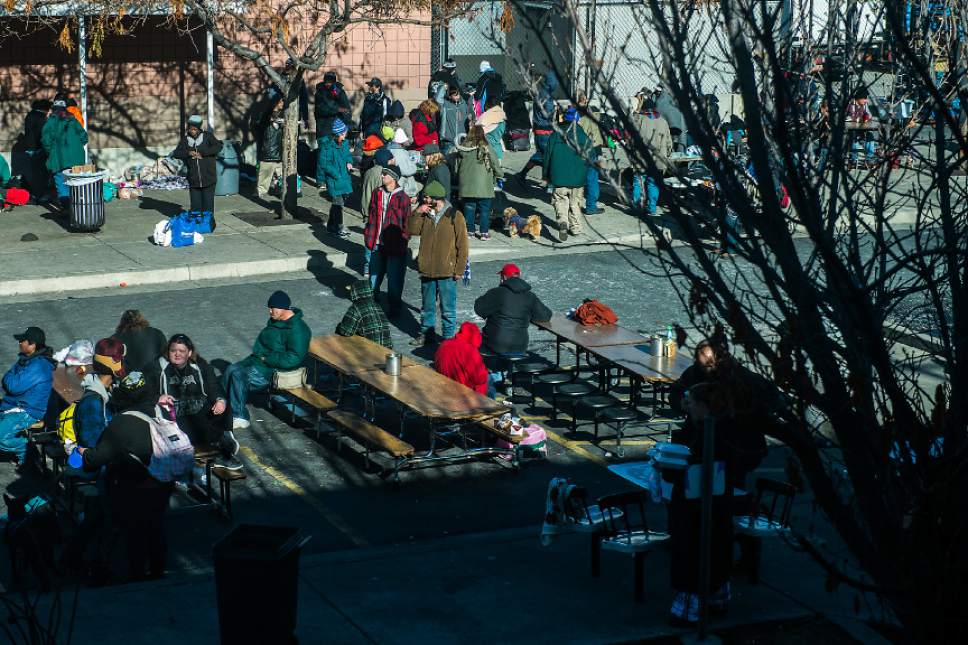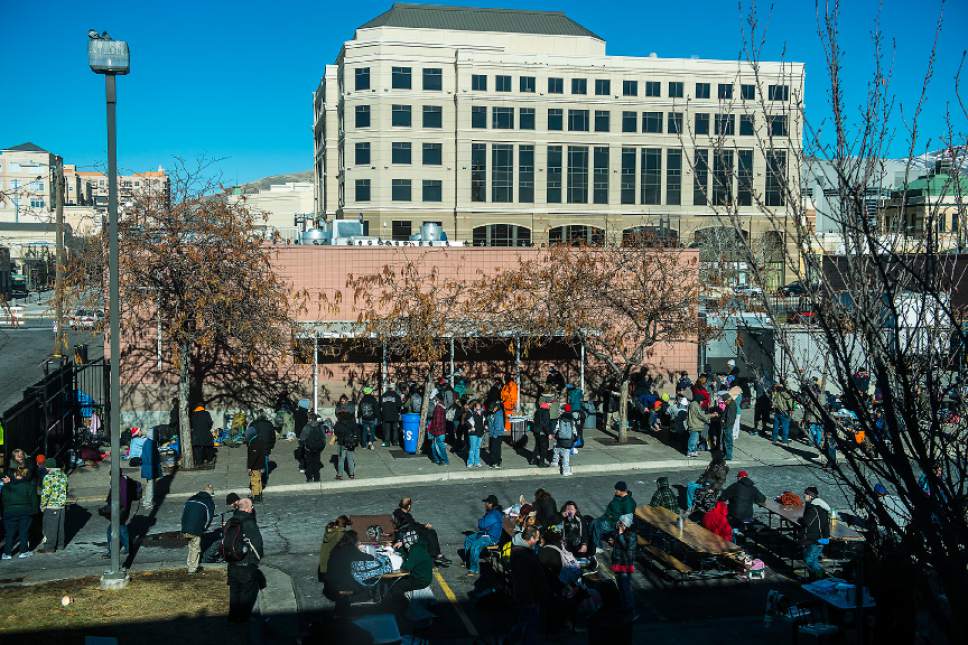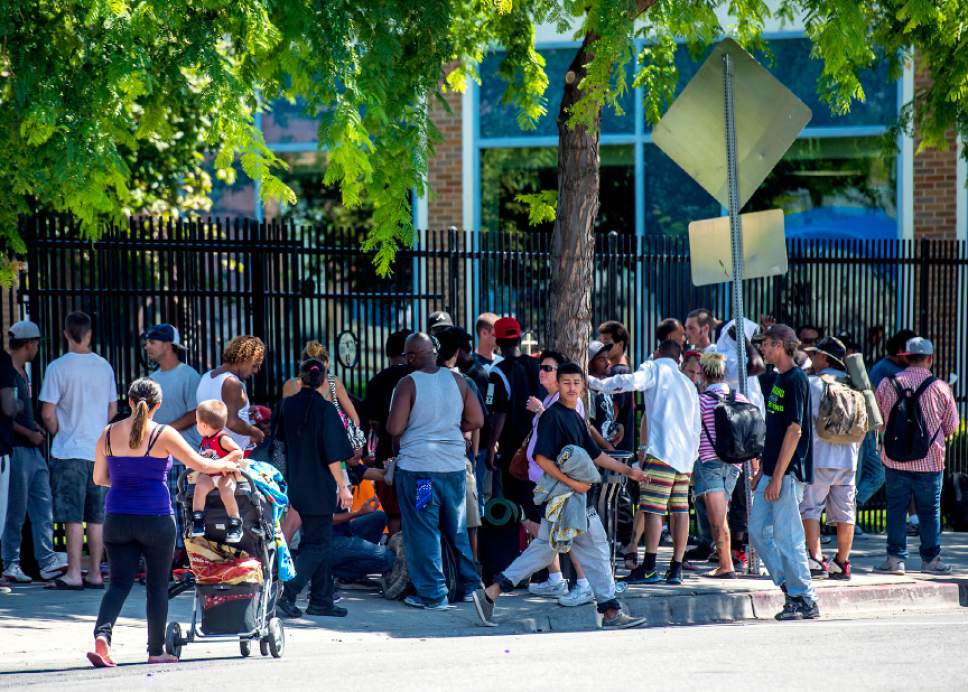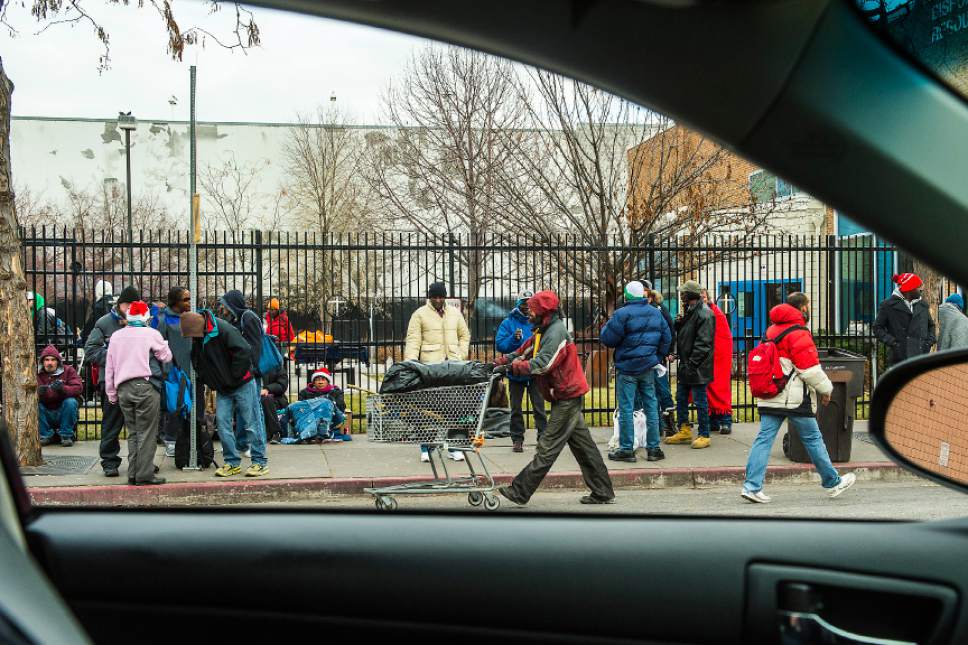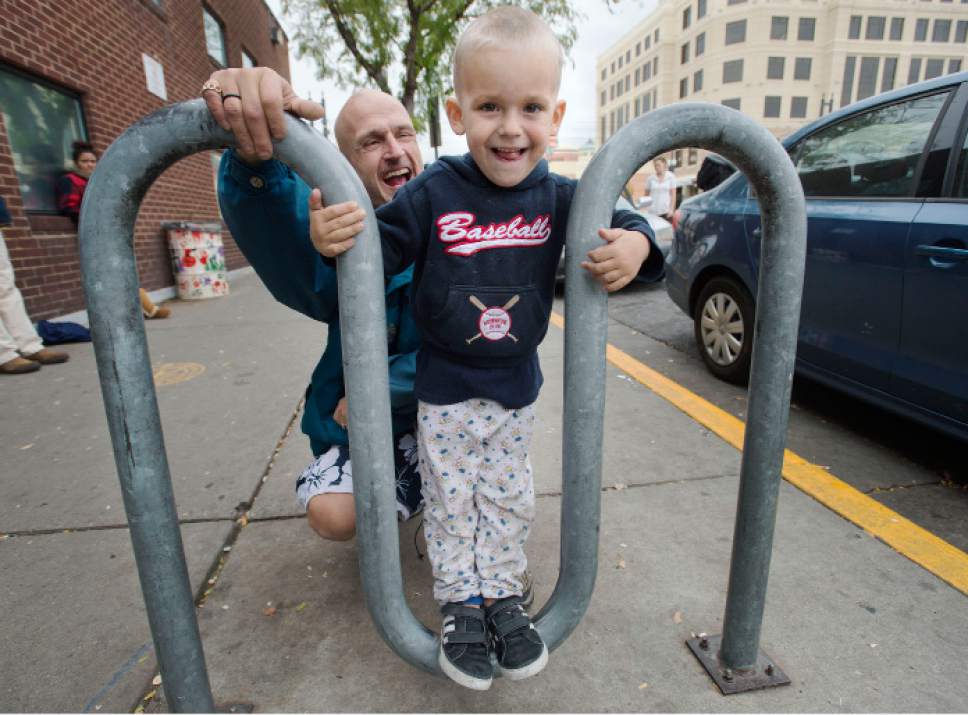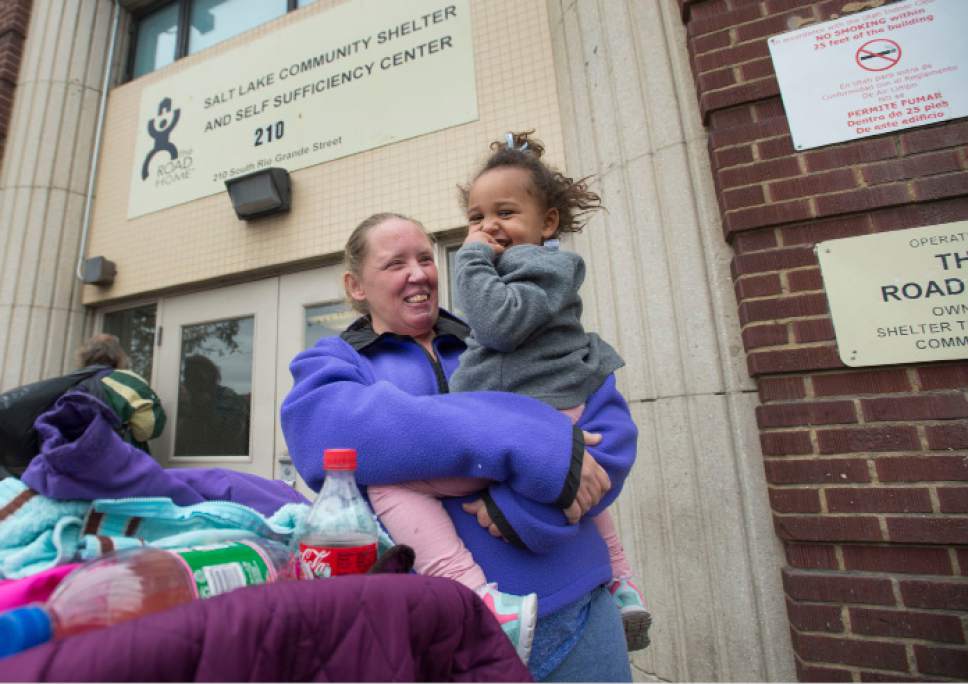This is an archived article that was published on sltrib.com in 2015, and information in the article may be outdated. It is provided only for personal research purposes and may not be reprinted.
The Road Home shelter would remain where it is, but new, smaller homeless facilities would be located in various neighborhoods throughout Salt Lake City and, perhaps, other municipalities — with a strong push to open a shelter for families and children within a year.
That recommendation from former Salt Lake City Mayor Palmer DePaulis, Utah Jazz owner Gail Miller and Salt Lake County Mayor Ben McAdams is expected to be forwarded Monday to a joint session of Mayor Ralph Becker's commission on siting homeless facilities and the county's committee on homeless-services efficiency. In an interview, DePaulis, Miller and McAdams said their priorities are to establish a new facility for families with children, smaller shelters with services for single men and women scattered throughout the community — ideally with the genders separated — and a system to prevent those on the verge of homelessness from losing their housing in the first place.
DePaulis and Miller head up Becker's commission, while McAdams oversees the county's committee. The trio also is expected to propose merging the two organizations in an effort to coordinate planning. The two panels were created late in 2014 with the expectation they would make recommendations on shelter sites and homeless services by the end of this year.
DePaulis, Miller and McAdams said the two bodies would vote on whether to adopt their proposal.
"We have the process we've been relying on," McAdams said, "so people can determine where they want to go."
The panelists could vote for one of two other options, including a centralized-campus model for shelters and services or scattered shelters with centralized services. The option favored by DePaulis, Miller and McAdams calls for scattered shelters and adjoining services for specific subgroups of the homeless population.
—
Families • The three said they would like to see a shelter for families with children operational in one year's time. Presently at The Road Home, children witness drug use, violence and are housed in the same building listed as the residence for dozens of registered sex offenders.
Single mom Helen Taylor, who is staying at the shelter with 3-year-old Kyrah, said separating families from single men and women is a good idea.
"All these single men and women here stand on the corner and do drugs," she said. "The kids don't need to see that."
Layne Lasser, a single dad staying at The Road Home with son Taybin, 3, said it's hard on the youngsters to hang out on the sidewalk all day waiting to get back into the shelter to claim a bed for the night.
"People are swearing and going back and forth waving their arms and everything," he said. "We saw a guy get stabbed with a 10-inch knife over on that corner."
The renewed effort to improve shelters and services was spurred in 2013 by the growing public perception that issues surrounding homelessness in Salt Lake City's Pioneer Park area were out of control.
Although Utah made national headlines earlier this year for practically eliminating "chronic" homelessness, there remain 12,000 to 13,000 homeless people in Utah. (Chronic homelessness is defined as people who have been homeless for more than a year or homeless four times in three years.)
—
Crime • Among other things, substance abuse and drug trafficking are visible among the throngs gathered around The Road Home near 200 South and Rio Grande Street and on adjoining 500 West. Police say the area has become an open drug market for nonhomeless buyers from Ogden to Provo and beyond. The dealers hide among the homeless, who also may be buyers and go-betweens.
Crime and other issues associated with The Road Home also acted as catalysts for the creation of the private Pioneer Park Coalition, which is headed up by business interests, including developers. The coalition also had discussed reviewing homeless services and facilities and the option of moving The Road Home in 2014 before Becker and McAdams moved to establish their own reviews.
McAdams, DePaulis and Miller said they also would propose an organizational scheme to coordinate independent homeless-service providers into an integrated system in which each one is cognizant and complementary of what others are doing for each client.
"We are seeking a system that moves people from crisis to stability," McAdams said. "And one that measures outcomes."
A data-driven homeless-services system would gauge success of programs, McAdams explained, allowing continuing modifications aimed at greater efficiency for clients.
"We need system-level data for system-level goals," he said.
Among the key challenges, however, is creating a mechanism that collects and tracks such information, McAdams said. But even with data, a perfect system will not materialize overnight.
"We will set the system goals," he said, "and let the community figure out how to achieve them."
Locating smaller shelters for single men and women throughout the city would reduce the impacts at The Road Home and Pioneer Park, DePaulis said. He compared the proposal to the Odyssey House model, where small recovery centers are located in neighborhoods without significant disruption.
—
Funding • Presently, $52 million is spent annually on homeless services in Salt Lake County. Of that total, $20 million is federal money channeled through Salt Lake County; $15 million is federal money funneled through state agencies; and about $17 million is private donations.
Another $42 million is spent annually on emergency medical calls, hospitalization, police and jail time for homeless people.
About 30 percent of homeless men in Salt Lake County spend about three months in jail in a given year, McAdams said.
Most of them should be in treatment for addiction and mental health issues, he added. But there is insufficient funding for caseworkers and treatment.
Among the challenges posed by the homeless population is that each individual requires a different set of services and treatment. A more efficient system, McAdams said, with better access to services and programs, could reduce incarceration rates.
"One size fits all is not going to work in many cases," he said. "Each individual needs customized programs that should integrate into a system."
Salt Lake City bears the brunt of what is a statewide problem, he explained. As such, a successful strategy must include participation from state and local governments, as well as private service providers and contributors.
McAdams said the city and county would seek one-time money from the Utah Legislature in January for a family shelter and other facility upgrades. The amount of funding to be requested is not yet known.
Beyond that, an integrated system that operates smoothly should draw more private donors, Miller said. "People will give to a program that works."


